TECH ENGINE MB GEARING
Gearing is very simple and very misunderstood. Getting the gearing right on a tuned Lambretta is very important. Over gearing would mean the scooter doesn’t pull in 4th and sometimes in 3rd. Under gearing would mean the engine is being thrashed all the time. Lambretta engines are very lucky in the fact that there are so many possibilities available given standard Lambretta gearboxes, special close ratio gearboxes, different drive / crown wheel sprockets and rear tyre sizes.
I will try to explain in very simple terms what effect gearing has on an engine. We have all ridden a push bike, we all know most push bikes have multi gears 5, 10 and 21 gears these days. In the old days we would have only had a fixed one speed gearing. For those who can remember a 1 speed cycle and then rode a 3 speed cycle it was heaven, gear adjustment whilst you traveled. Today with the multi geared bikes we can climb steeper hills and come down the other side much faster!
So lets take a push bike with 3 gears.
1st gear is bottom gear you can not go any lower there is no more gears to drop to which has a low gear ratio and is high revving. It makes it easy to set off and is easy to pull up hills, but try pedaling fast and the legs spin so quick you personally run out of breath and steam and it’s not long before you are knackered and give up.
3rd gear is top gear you can not go any higher there is no more gears this a the highest gear, and is low revving, it’s hard to set off, it’s hard driving into the wind and it’s hard going up hill and you may have to stand on the pedals just to keep them turning. But once moving or with the wind behind you or your going down a hill you could be flying. But try to keep the same speed up constantly and again you will be knackered and run out of steam.
Two extremes of gearing that most can relate to!
Throw another gear between top and bottom gear, lets call it the middle gear, Mr Adverge gear! It’s the gear most will use once you have set off. If you get going from 1st into 2nd and you will be easily cruising, occasionally down a hill you can pop it into top gear and the speed increases. Hit a hill and it gets harder to pedal, so you drop back to Mr Average gear and you plod on at your own pace………. you could call this cruising, ‘the best of all worlds’ it won’t give you the fastest speed but you can use it nearly all day without problem!
Quite easy to under stand I think.
Take three different people of different levels of fitness and given the 3 gears, each person will go for longer or shorter depending on their fitness. We could convert this in human terms to a lazy couch potato, a super fit sportsman or Mr Average who does some kind of recommended sports regularly, these people won’t get gold medals but can enjoy a healthy life. The couch potato could be a standard or under powered Scooter engine, Mr Average could be a middle of the road 15 – 25bhp engine and the super fit sportsman could be a high powered high torque engine 30+bhp. Obviously the fit person/engine will be able to go for longer faster until something breaks……….. a mechanical part or a human part. The couch potato type under powered engine can keep going but not at the same pace, this is why a standard engine will not win a race but we all know the ‘hair and the tortoise story’ so in some cases a standard can be better than a highly strung engine. Take Mr Average fitness and engine they have the ability to work all three gears when required, they have the ability to race for short periods and can quiet easily go slow. But to get both worlds I would say use Mr Average middle of the road gearing so the engine isn’t over revving and running out of steam or it isn’t struggling to pull high gearing. Most of us are Mr Average with Mr Average engines so I’m always one for Mr Average gearing to get the best of all worlds when driving our beloved Scooters.
Take one engine………. say a 20bhp average TS1, take the extreme same 3 standard gear boxes used in a Lambretta
- high revving Gp125, 15 x 46 sprockets, 6.14:1 gear ratio at 7000 rpm and the speed is around 58mph
- low revving GT200, 15 x 46 sprockets, 4.45:1 gear ratio at 7000 rpm and the speed is around 80 mph
- and Mr average Gp125, 19 x 47 sprockets, 4.95:1 gear ratio at 7000 rpm the speed is around 72mph
Looking at that we’re looking at a Mr Average engine at Mr Average maximum top revs the speed difference is 32mph from one gear box to another one. We know a TS1 with an over revving gear will blow up! We also know a TS1 with too high gearing won’t pull top gear, it but we all know the middle of the road sensible gear ratio will do 72mph in reality clocked by GPS!
Ok carry on reading as there is more to it but gives you at least an idea. Get gearing right and your engine will be right.
THERE ARE NOW 700+ GEARING VARIATIONS AVAILABLE
We don’t need to go into any theories about gearing we need to look at what is possible, what works, what is worth doing and what is not worth doing.
125 ENGINES
There are four engines with three different gearboxes.
| MODEL | GEAR | CLUSTER TEETH | GEAR TEETH | DRIVE SPROCKET | CROWN WHEEL | OVERALL RATIO |
| Li125 Series 1 and 2 Early Series 3 |
2 3 4 |
12 16 19 |
42 39 35 |
10.75 7.49 5.65 |
||
| Li125 Late Series 3 |
2 3 4 |
13 17 19 |
41 39 35 |
9.67 7.03 5.64 |
||
| Li125 Special GP 125 |
2 3 4 |
12 15 18 |
42 39 36 |
10.75 7.98 6.14 |
Li 125 Series 1 and 2, Early Series 3
This gearbox has a very high revving 1st and 2nd gear with a big jump between 2nd to 3rd. It tends to over rev in top gear which would limit its top speed. If the scooter is a wide style then standard gearing could possibly be fine as a high revving gearbox would suit the weight and size of the machine. Increasing the front sprocket to a 16 tooth would raise the gearing to have an overall top ratio of 5.30:1 which possibly its best set up, this would however make the jump between 2nd and 3rd even more noticeable! Swapping the gearbox to a LI 150 Italian would improve the all round performance.
Li 125 Late Series 3
This gearbox tends to over rev which would limit its top speed. Increasing the front sprocket to a 16 tooth would raise the gearing to have an overall top ratio of 5.30:1 which possibly its best set up. Swapping the gearbox to a LI 150 Italian would improve the all round performance.
Li 125 Special and GP 125
This gear box certainly over revs, which definitely limits the top speed. Increasing the front sprocket to a 16 tooth would only raise the gearing to 5.76:1 in top gear, which in most circumstances is still too high revving. Swapping the gearbox to a LI 150 Italian would be the easiest solution or swap the drive sprocket, crown wheel, chain and bottom chain guide to GP200 (18 x 47, 82 link) this then gives the same top gear ratio as the LI150 ideal for the 150 – 175 conversions.
150 ENGINES
There are 6 engines with 4 different gearboxes.
| MODEL | GEAR | CLUSTER TEETH | GEAR TEETH | DRIVE SPROCKET | CROWN WHEEL | OVERALL RATIO |
| Li150 Special Pacemaker |
2 3 4 |
13 17 19 |
41 39 35 |
9.67 7.03 5.64 |
||
| SX150 GP150 Li150 Special |
2 3 4 |
12 15 19 |
42 39 35 |
10.75 7.98 5.65 |
||
| Li150 Series 1/2/3 Italian |
2 3 4 |
14 17 20 |
41 37 34 |
9.01 6.69 5.22 |
||
| Li150 Series 3 Spanish |
2 3 4 |
13 17 20 |
41 39 34 |
9.67 7.03 5.22 |
Li 150 Special Pacemaker
This gearbox tends to over rev which would limit its top speed. Increasing the front sprocket to a 16 tooth would raise the gearing to have an overall top ratio of 5.30:1 which possibly its best set up. There is a post mod and pre mod version of this gearbox, both should be fine in 175 conversions, but the pre-mod versions tend to break used in 200 motors. Swapping the gearbox to a LI 150 Italian would improve the all round performance.
SX, GP and Li 150 Special
This gearbox tends to over rev which would limit its top speed. Increasing the front sprocket to a 16 tooth would raise the gearing to have an overall top ratio of 5.30:1 which possibly its best set up. This gearbox has a massive jump between 3rd and 4th gear raising the front sprocket makes the gap more noticeable! The best conversion would be to swap the gearbox to Li150 Italian.
Li150 Series 1/2/3
This gearbox is a very good all round gearbox suiting all tunes. Fitting a 16 tooth sprocket raises the gearing too 4.90:1 which is ideal for the more powerful engines.
Li150 Spanish
This gearbox has a massive gap between 3rd and 4th and I don’t recommend it, change the box to Li150 Italian.
Definitely don’t fit a 16 tooth sprocket!
175 ENGINES
There is only one gearbox for the 175 engines.
| MODEL | GEAR | CLUSTER TEETH | GEAR TEETH | DRIVE SPROCKET | CROWN WHEEL | OVERALL RATIO |
| TV175 Series 1, 2 and 3 |
2 3 4 |
14 18 21 |
40 37 33 |
8.78 6.32 4.84 |
TV 175
This engine has a very high ratio gearbox only suited to very torquey engines. If your engine is intended for two up driving then consider fitting the Li 150 gearbox. Fitting a 16-tooth sprocket usually makes the engine slower in 4th. Changing the rear crown wheel sprocket to 47 tooth helps the gearing and gives a top ratio of 4.91:1 this ratio would be more suited to this engine.
200 ENGINES
There are 3 engines and gearboxes
| MODEL | GEAR | CLUSTER TEETH | GEAR TEETH | DRIVE SPROCKET | CROWN WHEEL | OVERALL RATIO |
| SX200 Jet 200 (Same as TV175) |
2 3 4 |
14 18 21 |
40 37 33 |
8.78 6.32 4.84 |
||
| GP 200 Italian Indian (16/38) 3rd |
2 3 4 |
12 15 18 |
42 39 36 |
9.14 6.79 5.22 |
||
| TV/GT 200 | 2 3 4 |
15 19 22 |
39 36 32 |
7.98 5.81 4.45 |
SX 200 Engines
The SX 200 gearbox is a good all round gearbox, but the engine needs some pulling power to pull 4th especially two up! Changing the crown wheel to a 47 tooth improves the top gear ratio too 4.91:1. Consider changing the gearbox to Li 150 to improve engines that don’t pull 4th.
GP 200 Engines
There are 2 types of gearboxes, Italian and Indian. These gearboxes rev quite high in 4th gear, changing the front sprocket to a 19 tooth is the first conversion most people do, and will give a ratio of 4.94. It is possible with some engines to use 19 x 46 which gives a ratio of 4.84. The Italian gearbox has a larger jump between 3rd to 4th. The Indian gearbox has a larger jump between 2nd to 3rd. The GP 200 engine altered the drive sprocket arrangement to larger sprockets, this means the actual gearbox spins so much faster! Increasing the front sprocket increases the speed of the gearbox, which in turn, over the years chips away at each loose gear. The gear selector chips also and usually the cluster bearing surface wears away too. For this reason I tend not to recommend this gear set up unless all parts are perfect! It is not uncommon for gear and kick start teeth to chip off also.
TV 200 Engines
This gearbox in most circumstances has far too high gearing! Fitting a 47 tooth rear sprocket helps and gives a top ratio of 4.54:1 but is still usually too high on most engines.
ODD BALL GEARBOXES
There have over the years been a number of odd ball gearboxes that has come and gone. If you read the various booklets around some are mentioned, some are common, some are not. The most famous was probably the Italian 5 speed item, this is still available to day, beware! even the remade one is not up to any power. The Rally master of the early sixties had a special cluster made up. These are so rare I haven’t seen one.
One gearbox rears its ugly head now and then and most dealers haven’t seen one either. This gearbox was fitted to various batches of Indian Vijay 150 scooters in the 1980’s. There is also one with close ratios that dealers are using when they find them. These gearboxes where so rare it wasn’t worth mentioning but with all the Indian GP imports these gearboxes do keep popping up! There have been a number of scooter racers that have made their own close ratio clusters and used loose gears. Probably the most well known was the MSC one, who used modified Pacemaker and Spanish clusters to make close ratio gearboxes. AF Rayspeed had a complete close ratio gearbox made based on to MSC item. These were made in India and is still available today, beware! Power full engines break gear teeth regularly. Taffspeed also made a total one off gearbox but this didn’t work and disappeared. Today DRT from Italy are making close ratio 4 speed and now a 5 speed has been made.
MB have also made a number of close ratio gearboxes for different applications, mainly racing and sprinting. The most common one used an exchange Li or SX gear cluster, these are not available anymore.
- Gearbox 1, used 4 loose Li gears with a modified cluster to make the jumps between 2nd, 3rd and 4th very close
- Gearbox 2, used 1st and 2nd gears from a SX 200, then uses 3rd and 4th Li gears to make another close ratio box but with a higher 1st and 2nd gears
Both gearboxes were ideally suited to road race spec TS1 engines and used 18 x 47 sprockets as standard, which gives a very good all-round gear ratio especially when riding two up!
| MODEL | GEAR | CLUSTER TEETH | GEAR TEETH | DRIVE SPROCKET | CROWN WHEEL | OVERALL RATIO |
| MRB (UK) Li150 gears Special cluster |
2 3 4 |
14 16 18 |
41 37 34 |
7.65 6.03 4.93 |
||
| MRB (UK) SX200 1st and 2nd Li150 3rd and 4th Special cluster |
2 3 4 |
14 16 18 |
40 37 34 |
7.46 6.03 4.93 |
We have been experimenting with our our special close ratio 5 speed gearboxes and sliding interchangeable 4 speed gearboxes.
GEARBOXES THAT WORK FOR US
There are hundreds of gearing combinations available for Lambretta engines. What is best for each engine presuming the gearbox is original to the engine has already been covered.
MB recommend for most engine applications the LI 150 Italian and SX 200 gear box. The reason is; both have reasonably good gear ratios and jumps between each gear, which suits nearly all road going Lambrettas. The gear parts are strong and they don’t usually break or wear out. You can fine-tune the gearbox by changing usually only one sprocket in either direction. Slight differences in tyre sizes can also fine-tune the gearboxes further. Genuine Sx and Li gearboxes are not available any more other than second hand, (they are available as remade items from India and Vietnam but we have not tested these)! Sometimes you just need a gearbox on a new engine rebuild so MB recommend the Indian Gp 125/200 gearbox with either standard 18 x 47, 19 x 47 or 19 x 46, and it is possible to use 20 or 21 front sprockets, all these parts are easily available, sometimes you just have to use what you can get hold of even if it’s second best, in this case second best is perfectly fine for me!
GEARING ALTERATIONS THAT WORK
You could play around with Lambretta gearboxes forever! What makes one Lambretta pull a certain gear set up and another Lambretta not pull the same set up can depend on a number of factors. What works comes down to experience with a particular engine type and size, height of exhaust port and exhaust used.
The larger the piston size and the longer the length of stroke the more cc’s an engine will have, this usually means the more torque it will have, therefore giving the engine the chance to run higher gearing. The lower the height of exhaust port (within reason) the more chance of pulling higher gearing! High exhaust ports have less chance of pulling high gearing. Exhausts make a massive difference to how an engine works. Some exhausts are short in their tuned length this puts power higher up in the rev range. An exhaust that has a longer tuned length puts power lower down in the rev range. Exhausts that rev high need a high revving gear set up to keep in the engines power band. Low revving exhausts are more forgiving and much higher gear ratios can be used.
Gearing should be set up to suit the factors given and your type of riding. You need to look at 3 areas that could suit you.
- Do you only ride two up? You would require a gearbox that lets the engine pull off from a stand still with out stalling or having to use to much clutch slip and a combination of pulling 4th gear at the speeds you want to travel.
- Do you ride occasionally one up and occasionally two up? You would require a combination to suit both styles of riding. Over gearing would make life hard work two up but OK on your own. Under gearing would lower the scooters top speed when on your own.
- Do you only drive one up? If you ride on your own then set the gearing to suit the type of riding and speed you do. If you cruise at 60mph then high gearing is not required just average standard gearing. If you what to do excessive speeds then very high gearing would be required.
Then you need to consider some facts
- Is your bike a full bodywork bike, or is it a cut down?
- Are you a heavy or light person?
- What would the total carrying weight be!
- What type of riding do you do?
- Is it only town work?
- is it only motorway work?
- Do you only use it for rallies
- Do you need it for a bit of every thing?
Then you need to consider some MORE facts
- How fast do you practically what to go?
- Cruising and top end speed
- Where does the power come in with the type of tune and exhaust used
- Is your cylinder kit a race set up or touring set up.
- If you know your engines maximum revs then you can set your gearing to suit the top speed that you require.
All these factors will effect the perfect engine. An engine set up correctly, works better and becomes more reliable.
GEAR RATIOS EXPLAINED
Some confusion can take place when mentioning high and low gearing, or lowering or raising the gearing, these are Lambretta extremes as standard.
- A GP 125 gearbox has a high revving gearbox with a top gear ratio of 6.12:1 and is considered to have a low gear ratio
- A GT 200 gearbox has a low revving gearbox with a top gear ratio of 4.44:1 and is considered to have a high gear ratio
The gear ratio means for the GP 125, the engine has to turn 6.12 times to make the rear wheel turn once. Raising the gearing usually means increasing the front sprocket making the gear ratio higher! This doesn’t seem correct thinking about it practically but that’s how it goes, its not too important anyway.
PRACTICAL GEAR ALTERATIONS
What ever gear box you use you will have to choose a correct sprocket arrangement.
All gearboxes use 15 x 46 as standard this uses an 80 link chain, new or slightly worn. To raise your gearing (i.e. increase the gear ratio) you can do this by fitting a 16 tooth front sprocket, which requires a worn 80 link chain for the sprocket to fit. To lower your gearing you could use a 47-tooth rear sprocket this requires a well-worn 80-link chain. Some gear boxes suit using a 17 x 46 sprocket arrangement which uses a 81 link chain.
The exception to the above is the GP 200 gearbox which uses 18 x 47 as standard this uses an 82 link chain, new or slightly worn. To raise your gearing (i.e. increase the gear ratio) you can do this by fitting a 19 tooth front sprocket, this requires a worn 82 link chain for the sprocket to fit. To raise the gearing further you could use 19 x 46 this requires a new 82 link chain this set up looks like the chain is worn as it’s close to the top of the casings, it’s a very common conversion and does work as long as the chain doesn’t wear much so ALWAYS set up the crown wheel sprocket alignment!
These are the easy conversions as used by MB, chosen for their simplicity and gear ratios that work for an all round performance.
If you decide to use a combination of 14, 17, 20, 21 or 22 front sprockets or 45 and 48 crown wheels then 81 or 83 link chains may be required. If your engine is a track scooter then you will be expected to go down this route! A WORD OF WARNING do not braze or weld a chain half link or cotter pin, this will damaged the hardened chain parts and will break!
For years the only way to get oddball 81 and 83 link chains is to split them and use these these half links, today we now only stock the IWIS type chain with a riveted in half-link and these have proved to be very reliable.
GEARING FOR TS1 ENGINES
Until the TS1 cylinder was introduced Scooterists used to have stage 4 or 5 type 200 tunes as quick engines. These engines in their day had relatively small exhaust ports that gave good pulling power throughout the rev range. OK, mainly the horsepower was down compared to the TS1 but they pulled nearly any gearing going. It wasn’t uncommon for engines to use GT 200, SX200 with 16 tooth sprockets, GP 125 with 46/47 x 19/20/21 or 22 teeth! Giving top gear ratios of up to 4.38:1, indeed very high gearing by today’s standards. In the old days, pre 2000 cylinder heads used higher compression ratios, the fuel had higher octane and engines pulled the high gearing with very little problem.
The TS1 cylinder has larger transfer and exhaust port heights with larger port timings putting the power higher up in the rev range, with less amount of low down power or a lack of power until you hit the power band! When the TS1 cylinder appeared SX 200 46 x 15 and GP 200 46 x 19 gearing was suggested. This gives a top gear ratio of 4.84:1 to 4.80:1. based around what had always been used. Factors already mentioned dictates what gearing can be used. In reality the suggested gearing was far too high for every day use.
Depending on how the exhausts power comes in MB suggests slightly higher revving gear ratios, from 5.20:1 to 4.90:1. OK, you may loose some top end speed but life is much easier at normal cruising speeds.
At the end of the day a TS1 cylinder is a race cylinder. The original TS1 set up would use a 34-36mm carb, race expansion etc set up for top end speed coupled with the suggested gearing. This would be fine to drive one up with most of the time driving with your head down and yes if the exhaust allowed it, very good engines could maybe top the ton! Put two people on the same scooter and suddenly the old cast cylinders left you standing!
EXHAUSTS AND HOW THEY EFFECT GEARING
A lot of exhaust development has gone on since the introduction of the TS1 cylinder and it could be said some engine designers have come on leaps and bounds too. The exhaust system tells the engine how it is going to work. Most of this work has been done by the seat of your pants from the older tuners, today it can be done on a Dyno, they are an excellent way to show power but are not the be all and end all! If you read a print out of that engines power output graph, the graph starts at zero horsepower and zero revs or in some cases zero speed. The graph will then rise and reaches a peak giving maximum horsepower, the graph then drops on a downward scale but keeps revving on. Every read out in a magazine I have seen follows the horse power to the end of the graph stating its maximum top end revs or speed. This is fine on a dyno with no rolling drag or wind and with a ¼ of a ton of roller still in full motion, in reality this doesn’t work.
Reality is a full body Lambretta with a normal weighted person, with normal gearing and a correctly set up engine in normal road going conditions. As soon as the graph drops and for approximately another 500 rpm this will be the engines true top end speed! Believe it or not you may think you are doing 90mph but in fact it may only be doing 75mph! You can read all about how to read a dyno graph here.
For an example an old MB stage 2 Road / Race tune worked well with most common exhausts and gave 19 – 22 horsepower, our Devtour gave 23 – 24bhp, one of our race exhausts gave 28bhp! A standard tail pipe Clubman gave 15HP (today we have improved our Clubman and seen 28bhp)! That is the difference that exhausts can make to your engine. More importantly we need to look at torque to see what the engine can pull in terms of gearing.
- Clubman’s limited the engine revs to 7000 to 7500rpm, to day this has increased
- Other exhausts limited the revs to 6000/7000 to 7500rpm but gave more horsepower/torque allowing to use higher gearing
- Other exhausts lost bottom end power and gained power higher up in the rev range revving to 8000 to 8500rpm
- Some exhausts allowed the engine to rev to 10,000rpm
The difference in speed between 7000rpm and 10,000rpm is 30 miles per hour! A massive difference!
As shown by our example exhausts do make a big difference. The Clubman looks poor at 15HP but it gave the best spread of power and some people love their engines set up that way, as it will give 70mph all day! Our new MB Clubman on a TS1 can give 28bhp! Which really is quite amasing, some TS1 engines are now pushing well over 30bhp with new exhausts from lots of developments from dealers. Other exhausts can give the same top HP but power can be in a different part of their rev range. This can depend on a number of factors already mentioned. It is impossible to make an exhaust to give perfect power across the rev range, I know I have dynoed different exhausts over 400 times to try to improve our Dev-Tour exhaust which is now an old pipe, and to date we haven’t found a better exhaust for all round spread of power with speed! We have improved our Dev-Tour but it’s taken a lot of time. A 2 stroke exhaust will always be a compromise to how the internals of the engines are set up and a compromise to how the engine will work. One engine may suit one persons riding another may not suit the same.
ROUND PORT EXHAUST EXAMPLES
I am not stating this to slag off any mentioned exhausts, it’s a fact of how that exhaust works.
- Taffspeed/Swift/JL3 exhausts give good low down power but don’t rev much beyond 6500 – 7500 rpm. Making it good for two up riding but not good for road / racing. If you used normal gearing like an SX200, which basically equates to one to one (one 1000 rpm is 10mph), gearing to speed then your true top road speed is actually around 65 – 75mph! Because the Taffspeed exhaust suits low down power, higher gearing can be used to compensate for more top end speed. We had one engine set up with a Taffspeed that used SX200 gears with 46 x 16 tooth sprockets giving a top gear ratio of 4.52:1, that engine pulled easy down to 30 mph in top making it very easy to drive and still revved out in top gear. This engine was an exception and normal gearing recommendations would be 4.84:1 to 4.60:1 for a good engine using the Taffspeed exhaust. We do hear of people using 4.4:1 ratios with these exhausts, personally I think it is to high, it makes 4th gear more of an over drive so expect that you can not wind on the throttle in 4th and pull away, it would be a slowly roll on the throttle and work at it using declines, wind or slip streaming. Personally I like engines where you can wind it on in 4th and have acceleration.
- On the other hand a high revving JL4, NK, KRP2 or Franspeed exhaust does the opposite and doesn’t hit power until around 5000 – 6000rpm, then the power kicks in. This style of exhaust tends to be no good for touring or two up riding as there isn’t enough power (torque) out of its power band. Using normal gearing usually means the engine doesn’t pull 4th gear unless riding conditions are in your favor. But if ridden hard constantly it could be possible to get 10,000 in top gear giving you that 100mph! You may chose to use a higher revving gearbox i.e. straight Li or GP, this would limit your top end speed but makes life easier at lower speeds as its is easier to stay in the engines power band at normal riding speeds and tends to be a quicker bike.
- The MB Dev-Tour was developed to work on any engine, cast or TS1 type engines. We looked at how the opposition’s pipes worked and listened to customers requirements. Basically people wanted a mixture of bottom end power and top end power. As previously mentioned having all this is nearly impossible! The Dev-Tour has slightly less bottom end than a Taffspeed and slightly less top end to a NK, but has power between the both having a good mid range with usable pulling power from 3000 (30mph) to 8000rpm (80mph) with peak power at 6000 – 7000rpm or 60 – 70mph with reasonably high horse power making it a perfect touring pipe! Higher gearing raises the speed if required.
OVAL PORT EXAMPLES
I’ve already touched on gearing for oval ported cylinders from the past. Today there are many more examples of cylinder kits. Gearing really does find the weak link to these kits, what I’m getting at is some of these kits are badly tuned in terms of correct port timings or the head design is not so good. It’s common as muck to read a forum thread with people telling us all about what parts are fitted to their bike and then question why it doesn’t pull normal gearing and then the answers start…….. poor porting and cylinder designs mean you have to do something not normal to make it work! Mugellos and Rapidos are prime examples with razor edge power or gutless running. When you see 5.60:1 gearing to make a 200 engine work you know something is not right! Take our RT kits these work from 5.20 – 4.80:1 really easy using basic reliable gearboxes, as does the SIL Indian Factory kits we do. But look at the RT kit it uses a small exhaust port and port timings that work and create a good torquey motor and it has been known that they can easily pull down to 4.30:1 gearing without dieing in top. Over ported piston ported engines are hard to set up, a simple trick is to fit a Clubman exhaust, these promote lower down power and trick the cylinder ports, this is why you will see people saying their Mugello/Rapido works fine! Fit a decent expansion and then you will find how bad the engine really is. So many times people have come to set an engine and think its a good engine, we can tell just by revving up that it is not, a quick ride proves it, once fettled and reworked people can not believe the transformation in power, then suddenly the bike pulls the gearing!
With Reed engines they are more forgiving and can carry through the weak power areas, piston port cylinders are not forgiving so you have to get gearing right.
Since I first wrote this article, there has been many exhausts which have come and gone. It really is a mine field along with all the new cylinders that are available. One exhaust may be suited to a particular style of tuned engine but it may not work on another engine. There are some very good working pipes around, most are aimed at high mid to top end power. Personally I like high revving race style engines with gearing to suit, but I usually ride head down arse up……. but most just want an exhaust to work at low down revs with a reasonable cruising speed, this is why we have always aimed at doing our TTT Touring Torquey Tunes, power spread is the key to a good tuned engine in a Lambretta frame.
SPEEDOS AND REV COUNTERS
Never trust a Lambrettas speedo it’s a well-known fact that some work some don’t. Some look like windscreen wipers, some are slow and some are fast! But then again you get the odd one that is perfect! I had a perfect one on my LC in the early 80’s, I know because I was doing 85mph with my head down only to look at the side of me to see a Police car clocking me, that was on my LC GP and in those days I could get the needle off the clock and that engine used 170 degrees exhaust port with high gearing! The best way to read your speed is to fit a good rev counter and using a formula based on revs, gear ratio and rolling circumference of your tyre you can work out your speed in top gear. I use my rev counter as my speedo as this method is very accurate in 4th. When testing my sprinter once I worked out my revs to speed and confirmed it was correct to 0.5 of a mph at 108.5mph by a police speed camera! That’s good enough for me! Rev counters are a cheap simple way to work out speed. Today there are a number of small digital speedos which can be fitted and set up or you can use a GPS………………… Today we have reality speeds! And people have finally found they have never been going as fast as they thought!
CHAINS
MB have used many chains over the years, to date the best chains we have ever used is the German IWIS, 80, 81, 82 and 83 link. Until the Iwis turned up we used Italian Regina, 80 and 82 link and Spanish Iris chains, we do not use or recommend these any more because they fall apart. There are other chains which we don’t touch with a barge pole, if you ever see ROLON stay clear these are Indian and don’t usually get to 1000 miles. These are not very good chains will wear out and rollers will fall off!
Even the best chains can be slagged off for wearing out! ALWAYS check to see if the chain sprocket alignment is correct this is the single cause for worn chains.
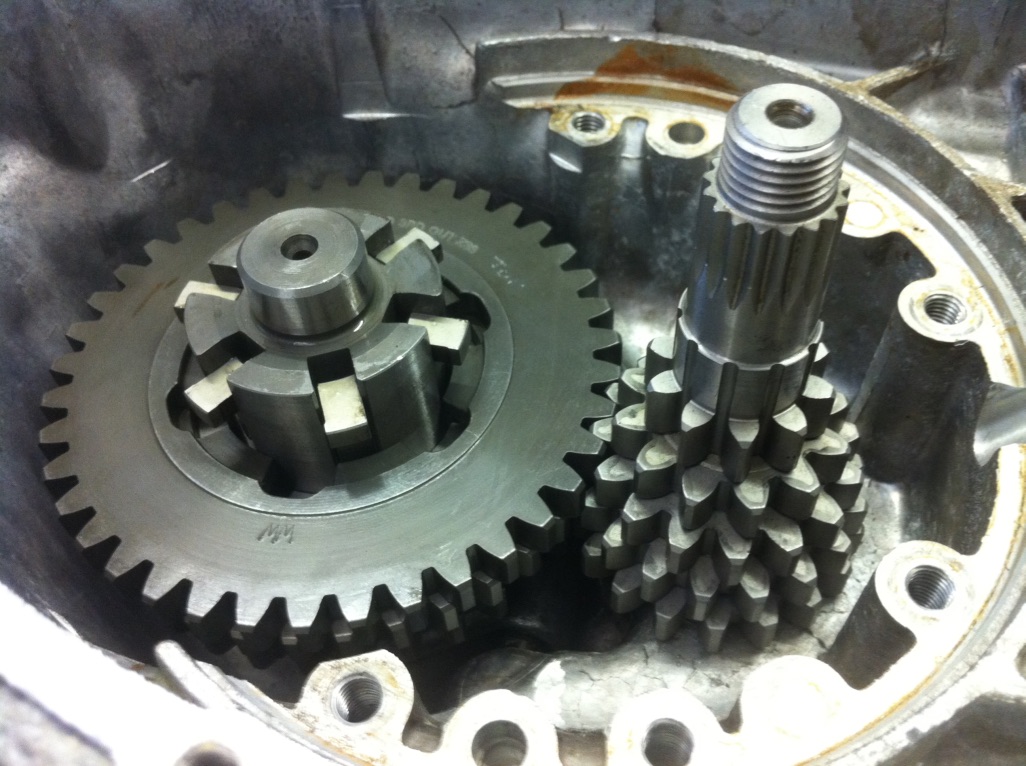
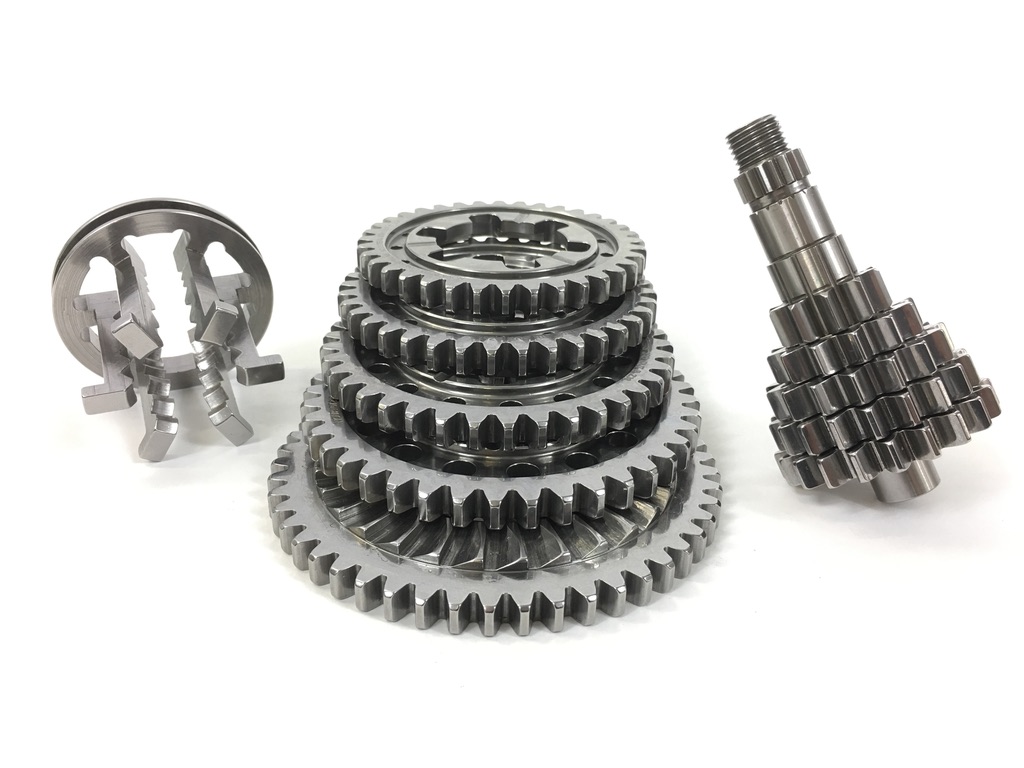
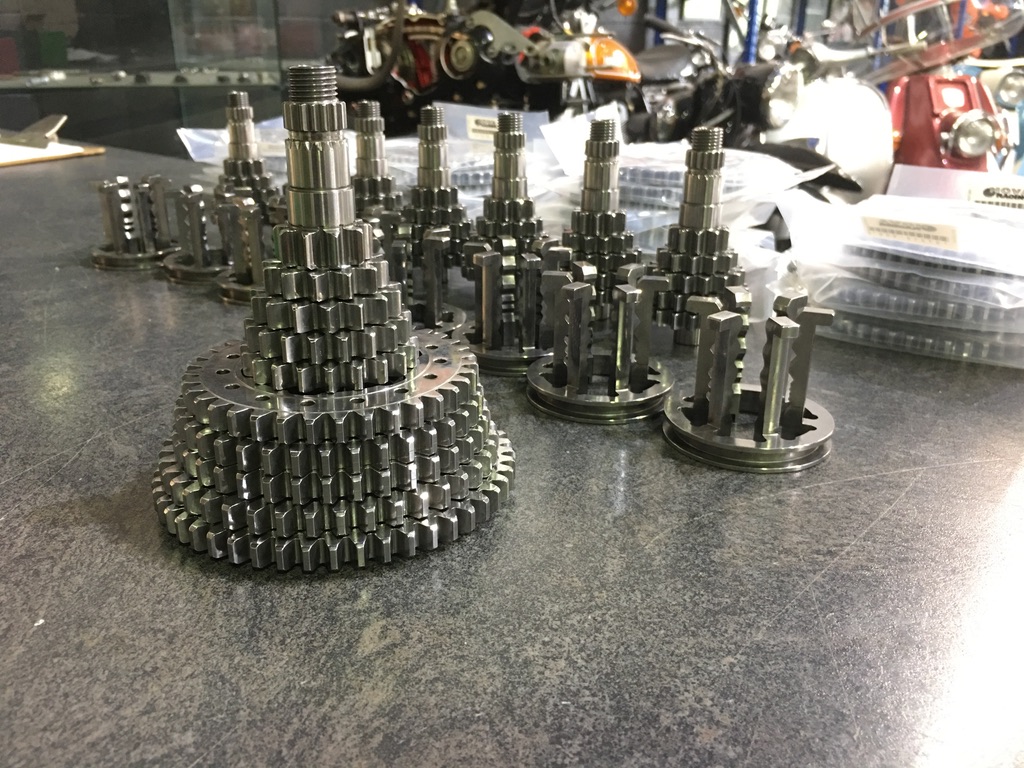
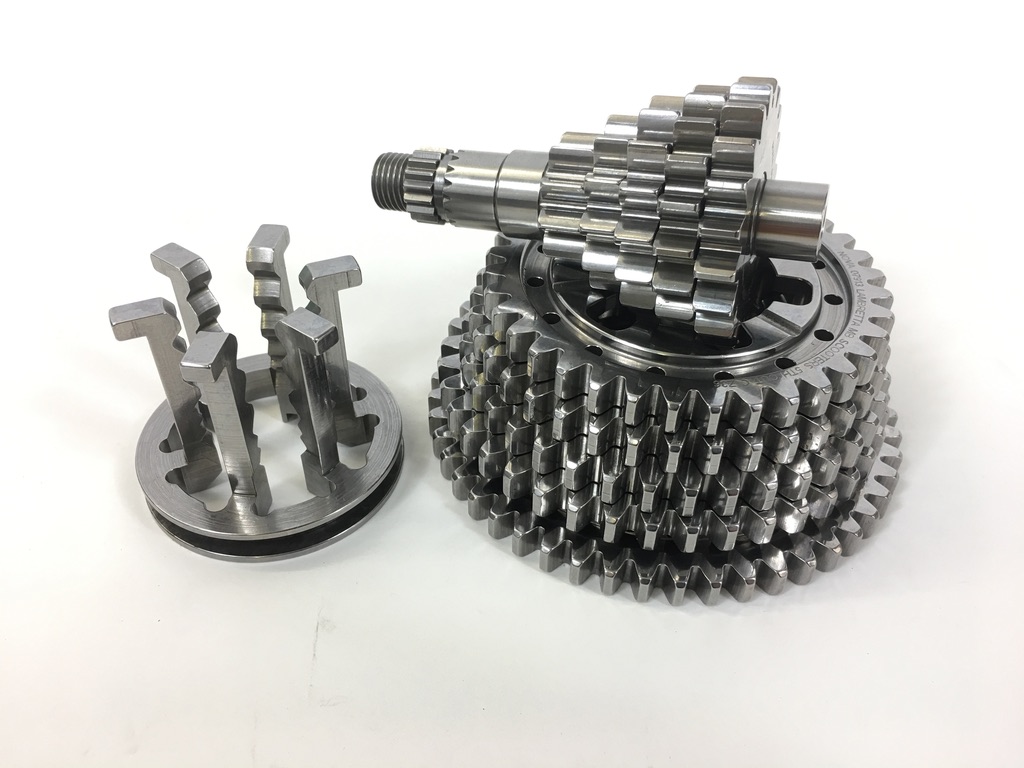
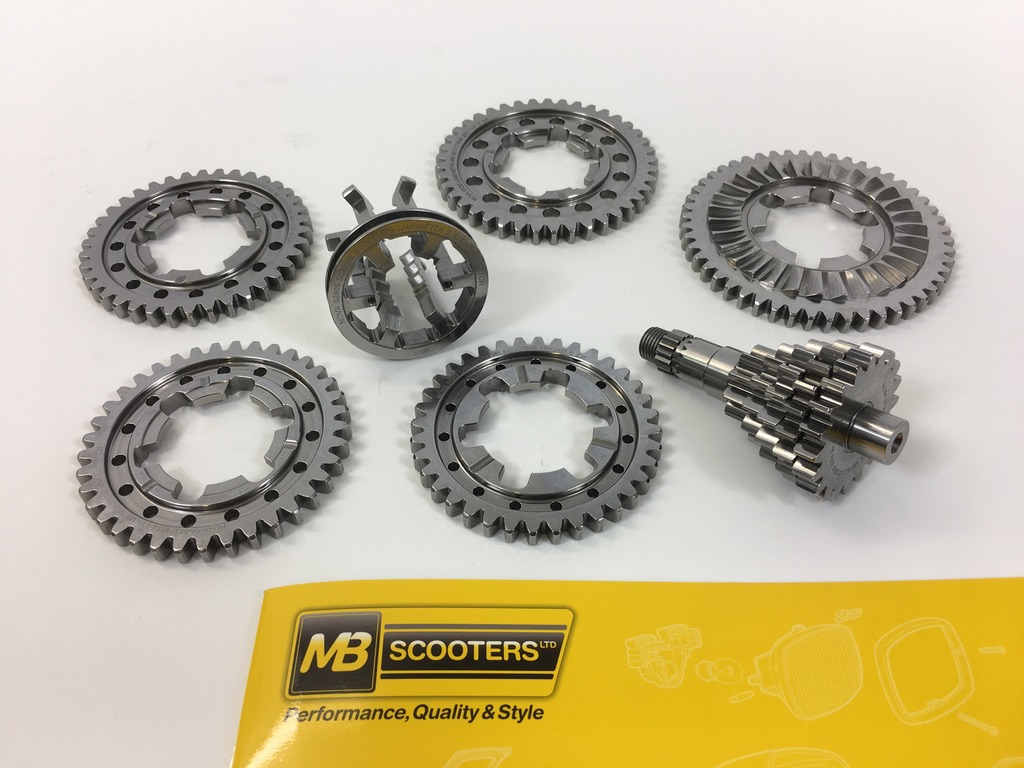
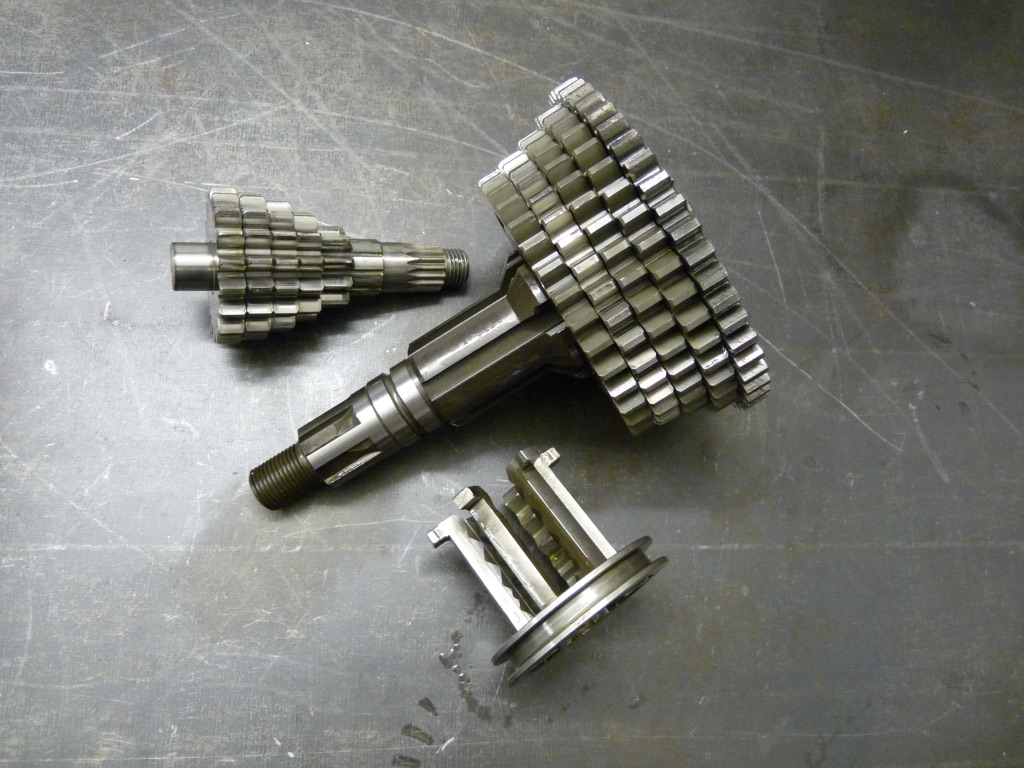
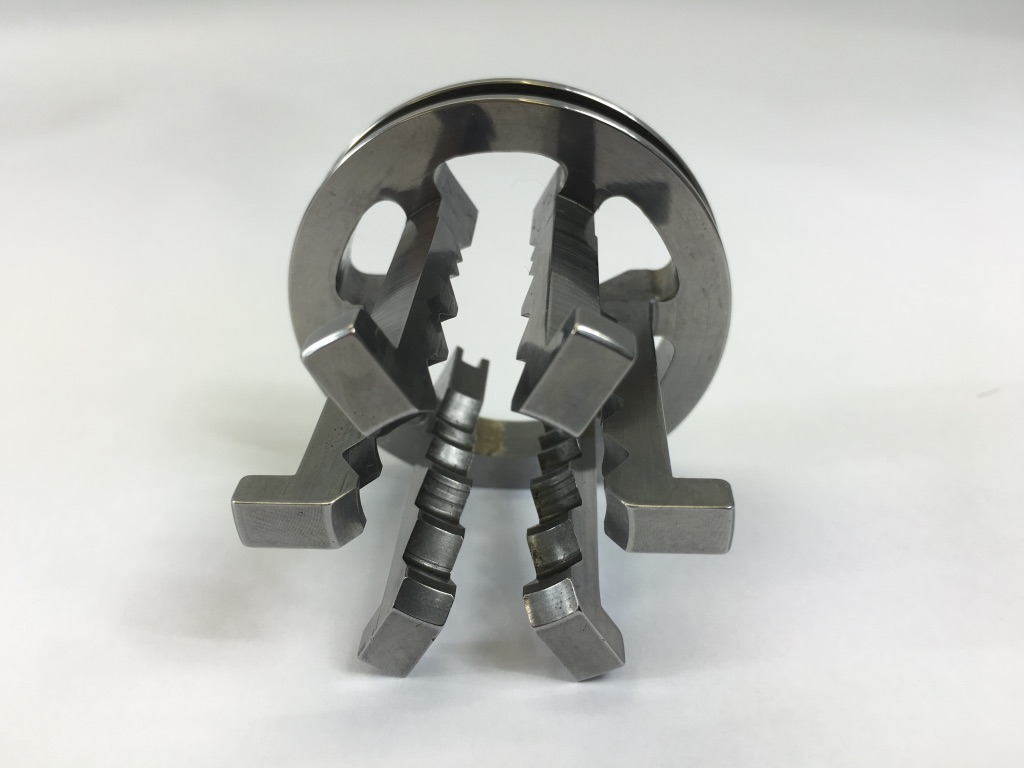
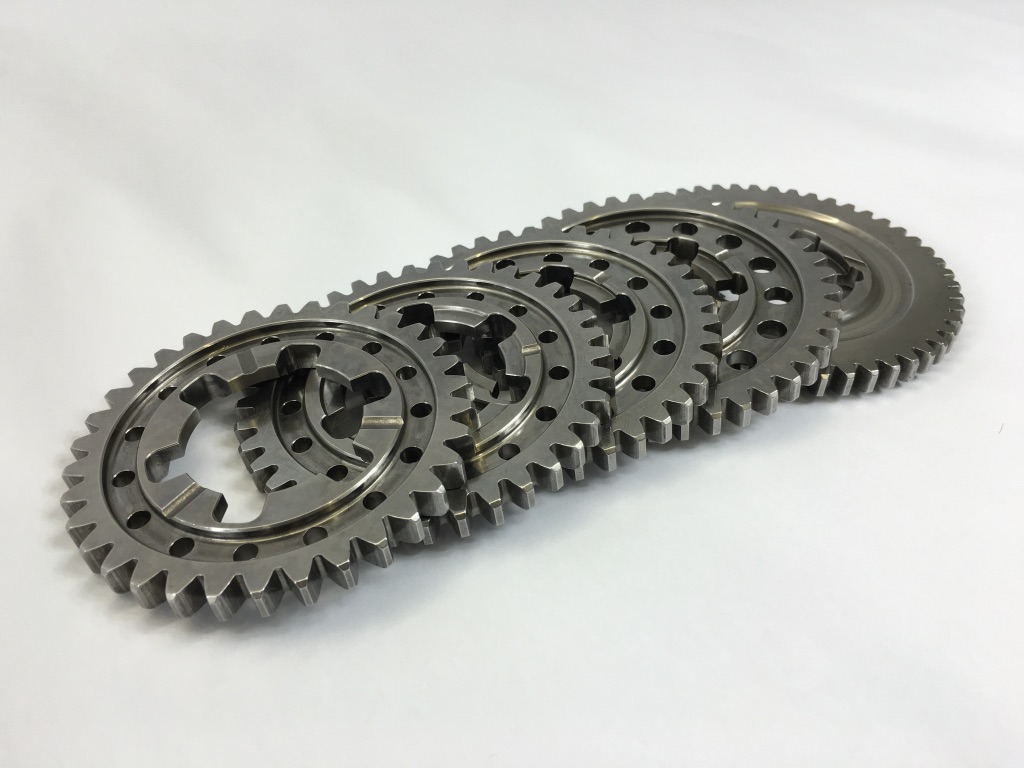
If you have any questions please email Mark mark@scooters.co.uk





